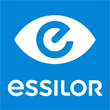- OT
- Industry
- Contact lenses
- EssilorLuxottica releases three-year clinical trial results of its Essilor® Stellest™ lens
Advertorial
EssilorLuxottica releases three-year clinical trial results of its Essilor® Stellest™ lens
The results show that the Essilor® Stellest™ lens continues to exhibit strong efficacy in slowing myopia progression and axial elongation


Advertorial content is paid for and produced by a sponsor, and is reviewed and edited by the OT team before publication.
03 November 2022
EssilorLuxottica has released the much-anticipated three-year clinical trial results of its breakthrough innovation Essilor® Stellest™ lens, showing that it continues to exhibit strong efficacy in slowing myopia progression and axial elongation.
The clinical trial was conducted at the Eye Hospital of Wenzhou Medical University in Wenzhou, China, where 151 children from the first two years of the study were switched to spectacle lenses with highly aspherical lenslets (HAL), while a new set of 56 children were recruited and wore single vision lenses.
Key highlights from the clinical trial include:
- Essilor Stellest™ lenses saved more than one diopter of myopia on average over three years, demonstrating conclusive evidence that they remain effective in slowing down myopia progression in children in the third year1
- The results confirmed the significant positive impact of wearing time on myopia control efficacy. Children who wore Essilor Stellest™ lenses full time2 saw a marked increase in myopia control efficacy
- Aside from being effective in younger children, the results confirm that the Stellest™ lenses are also effective in slowing myopia progression and axial elongation in older children.
Dr Andy Hepworth, professional relations manager at Essilor, said: “We are extremely encouraged to have such conclusive data showing that Essilor Stellest™ lenses continue to slow down myopia progression in children after three years. With the growing prevalence of myopia and associated risk of ocular conditions, we are proud to be at the forefront of myopia management with our lenses to move the needle in the fight against myopia.
“The UK launch has been very much welcomed by eye care practitioners (ECPs), who are being faced with ever more young myopic patients seeking a long-term spectacle lens solution. When myopia is corrected through a single vision lens, this optical correction has no impact on slowing down eye elongation.”
He added: “Essilor Stellest™ lenses now offer the dual benefit of myopia correction and control to potentially help minimise the risk of related complications that can eventually lead to irreversible vision loss, and without any aesthetic compromise.”
HALT technology
Designed with Highly Aspherical Lenslet Target technology (HALT)3 technology, a constellation of 1021 invisible highly aspherical contiguous lenslets distributed over 11 rings on the surface of the lens have been designed to create, for the first time, a volume of non-focused light in front of the retina, and which follows the shape of a child’s theoretical myopic retina. This signal helps to slow down the eye elongation and therefore myopia progression.
Patient education
Essilor believes that there is a big job to do in educating the public about the topic of myopia management, particularly as by 2050 it is believed that half of the population could be affected by this vision condition with significant social, health and economic consequences4.
It has therefore strived to fully support ECPs during the launch of Essilor® Stellest™ lenses to help with practitioner communication around the topic of myopia management.
Charlotte Timbury, Stellest product manager for north Europe, said: “The Stellest™ passport was launched in March and accompanies every lens order. It is designed to follow a patient’s journey to help them track any changes in their vision. This helps to support communication between the practitioner, the patient, and their parents by measuring what has been happening to the child’s myopia between their six-monthly visits.
“The ECP fills in the passport during each visit and logs any changes to the child’s vision to act as a gentle reminder for parents to keep coming back for regular optical appointments and stress the importance of myopia management as well as correction.”
Its team of business development managers have also been locally training independent eye care practitioners on the product and support has been available in the form of a wide range point of sale to help engage the patient in-practice.
Essilor’s consumer website has pushed the topic of myopia management and plug in and play social assets were created for ECPs to use as a patient education tool.
There are also newly created CPD approved modules about myopia management. These include a range of formats including lectures, discussion workshop and peer reviews. Each of the discussion options are facilitated by fully trained and approved members of the Essilor team.
A myopia management certification programme was recently launched on EssilorLuxottica’s training platform, Leonardo, which comes with a suite of training courses to educate and empower eye care professionals on myopia, its complications, and its management.
Visit the website to find out more.
References
- Compared to SVL (0–24 months) + SVL2 (24–30 months) progression. SVL2 was the new control group of 56 children, especially recruited for the 3rd year and fitted with single vision lenses
- Children who wore the spectacles ≥ 12h/day, everyday
- Highly Aspherical Lenslet Target technology, aspherical lenslets
- Brien A. Holden, et al, (2016). “Global Prevalence of Myopia and High Myopia and Temporal Trends from 2000 through 2050”. Ophthalmology, 123 (5), 1036-1042.

